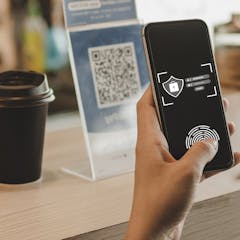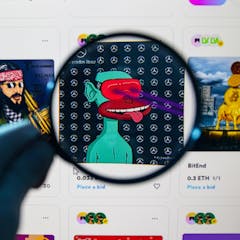
Articles on Blockchain
Displaying 1 - 20 of 199 articles

There are reasons to believe that the bitcoin halving could keep the value of the currency high.

Food fraud costs billions globally. But blockchain and machine learning offer hope for a more transparent and safer food system.

Twelve months ago, bitcoin looked dead in the water. Now it could be heading to all-time highs.

This is why no one is buying your cartoon ape.

What will ransomware attackers focus on next?

Worldcoin wants to provide ‘proof of personhood’ in an AI-filled future, but critics and governments are unimpressed

Cwmni mwyngloddio o Gymru oedd y cyntaf i roi tocynnau i weithwyr fel dull arall o dalu.

A Welsh mining company was the first to issue tokens to workers as an alternative form of payment.

Crypto platforms are calling for clear regulations rather than lawsuits from regulators.

There are many uses for digital systems that are not centrally controlled and that allow large numbers of people to participate securely, even if they don’t all know and trust each other.

Central banks are now taking digital currencies seriously, and the EU is exploring the idea. While an “e-euro” could increase monetary security and stability, the venture is not without risks.

The global trade of counterfeit and pirated products costs countries like Canada billions a year. Governments and industries must come together to protect Canadians.

Here are the trends on the cusp of transforming the online world.

Even though some traditional financial firms parked millions in the bankrupt company – once valued at $30 billion – the impact of FTX’s spectacular crash is limited to crypto investors

The rise of decentralised exchanges and growing regulatory pressure could strengthen crypto.

Students gain control over their own academic records or professional certifications, but blockchain’s immutability means mistakes cannot be erased.

Ethereum, one of the world’s largest blockchains and host of decentralized finance, NFTs and billions of dollars’ worth of cryptocurrency, is poised to dramatically reduce its energy consumption.

As businesses establish themselves in the metaverse, the amount of financial transactions there will increase. This will come with previously unknown risks.

To live up to their promise, both on the African continent and elsewhere, digital currencies must be globally coordinated.

Retailers are increasingly resorting to the technology in a bid to increase consumer confidence over their products’ supply chain.
